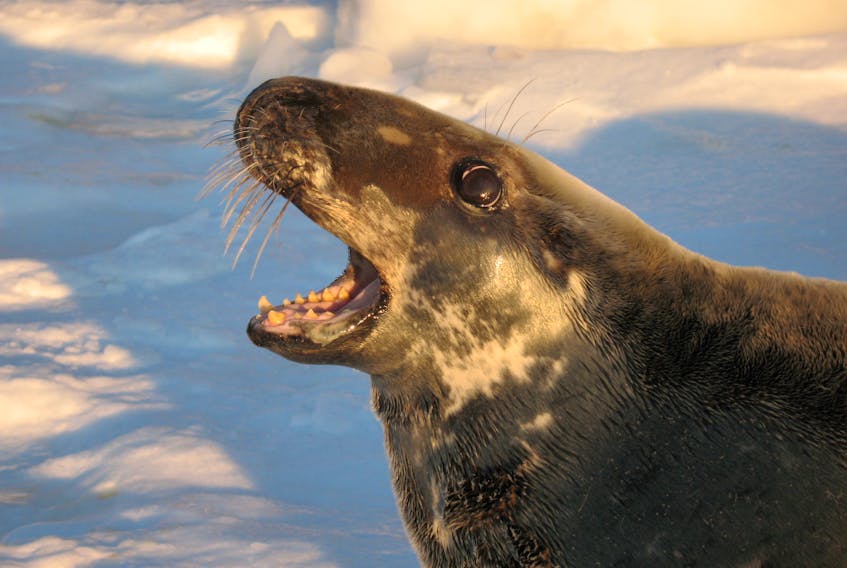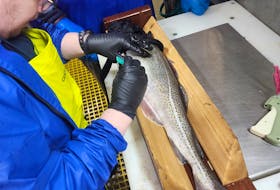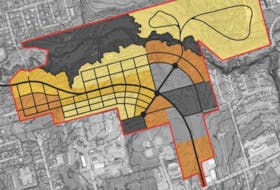ST. JOHN'S, N.L. — It didn't take long to get a reaction.
Soon after the World Wildlife Fund (WWF-Canada) called for closure of the capelin fishery in Newfoundland and Labrador this year, fish harvesters and others took to social media to give their opinions and blame the seals.
There's no disputing the capelin stock has declined.
In a press release this morning, the WWF pointed to a 2019 report Fisheries and Oceans (DFO) showing show capelin in area 2J3KL, along the province’s northeast coast declined by about six million tonnes in the late 1980s, to less than 150,000 tonnes in 1991.
“The 2020 assessment estimated abundance at just four per cent of levels in 1990 and projected the likelihood of further declines at 90 per cent,” the WWF added in its press release, saying this is evidence of a stock in critical condition.
Fishing quotas in the area have also been dropping. From a heyday of 80,000 tonnes of quota in the early 1990s to just 24,000 tonnes last season.
Despite the data, the group said, Fisheries and Oceans has never applied the Precautionary Approach framework to capelin management.
“This means there are no formal limit reference points or pre-agreed upon harvest control rules for this crucial fish,” said the WWF.
For that reason, the group said, DFO should not open the capelin fishery until the precautionary approach can be applied.
“There is no question. We are fishing a collapsed resource,” said Sigrid Kuehnemund, VP wildlife and industry, WWF-Canada. “In addition to the overwhelming scientific reports, coastal communities are reporting less or no capelin spawning on the beaches as well as a lack of capelin in the bellies of fish like char, salmon, and cod. By failing to protect these forage fish, we are failing to prioritize the health of the ecosystem, which will have long-term impacts on the biodiversity and economic opportunities of the region.”
Last year, fishers caught about 24,000 tonnes. While the capelin fishery provides just a fraction of income, compared to snow crab, it does help supplement incomes—especially for smaller boats (under 35 feet) that have less snow crab and limited cod to catch.
The seal factor

The Fish Food and Allied Workers (FFAW) union told SaltWire in a prepared statement that the industry cannot accommodate a shutdown of the capelin fishery.
“Capelin is an important contributor to hundreds of multi-species enterprises, many processing and other fishery workers in the province, as well as the socio-economic wellbeing of their communities.”
For once, groups that are normally on opposite sides of fishery debates, seem to agree.
Derek Butler, executive director of the Association of Seafood Producers, told SaltWite they are disappointed in the WWF call to close the fishery.
"In 2018, not that long ago, WWF welcomed the reduction in TAC that year, and in their media statement then they underscored the importance of leaving fish for the larger marine ecosystem of seabirds and marine mammals. We understand that.
"When you take into account what seabirds, whales and others consume, the fishery is a very small piece of all this."
— Derek Butler
However, said Butler, "the evidence shows the fishery is the lowest in rank in terms of removals from the biomass. When you take into account what seabirds, whales and others consume, the fishery is a very small piece of all this."
Butler said a capelin fishery closure now "is a blunt and unnecessary instrument."
He said more science is needed on capelin, including expansion of science survey areas and possibly more surveys during the year. He noted Iceland carries out capelin surveys twice a year.
"Yes, that will take more resources, but that is what is needed," he said.

Fishery advocate Ryan Cleary says it doesn’t make sense to talk about capelin stocks without talking about seal predation.
He points to a DFO report from 2012 that estimates capelin consumption by harp seals in the northern cod zone of 2J3KL to be 1.6 million tonnes.
Given that fact, he said, it’s obvious the bigger threat to capelin is not from inshore fishers, who took just 24,000 tonnes of capelin last year.
“Ending the commercial fishery without tackling the impact on capelin stocks by harp seals is useless and an insult to fishermen,” said Cleary.

Others were holding forth on social media.
On the Facebook group Newfoundland Fishermen’s Forum, one commenter posted, “Shoot the seals. Lots of em.”
Others expressed concern for the capelin.
“Capelin are the goldfish of the ocean. It’s the little fish that makes the world go round. If anything ever happens to the capelin, we could be looking at an empty ocean,” was one comment on the group Newfoundland Outdoor Heritage Coalition Inc.
And on the group Salmon and Trout Fishing NL, the comments were mixed.
“There’s 7.6 million up north just waiting for any surviving salmon that gets past this bunch. What a joke of a government we have,” wrote one commenter.
Another posted, “Hundreds of years ago there were so many fish here especially Cod, that John Cabot said they were so plentiful, you could walk across them. And guess what? There were way more seals there than there is today . . . . Overfishing by MAN depleted the fish stocks. So stop trying to blame seals for lack of cod and capelin, tuna and crabs etc.... MAN raped the waters and never gave back anything.”

The Precautionary Approach
Victoria Neville is senior specialist in ecosystem restoration with WWF-Canada.
She said capelin as one of the most important species in the food chain.
They feed on plankton, she said, and that plankton-rich diet creates the fat and energy that other species — from cod and turbot to mammals like whales — need to feed on to survive.
On the matter of seals, she said the group is “strongly in support of taking the Ecosystem Approach to fisheries management.”
She noted seal consumption is addressed in DFO’s Ecological Sciences sector and will be addressed by the recently-appointed Atlantic Seal Science Task Team.
She also pointed out that if DFO would apply the Precautionary Approach for capelin, and the stock is designated in the critical zone, “guidance on rebuilding plans dictates that multispecies factors such as predator-prey relationships and competition within and between species, should be considered in developing rebuilding plans.”

Simply put, DFO would have to talk about seals in relation to capelin.
The WWF-Canada is not the only group suggesting DFO should shut down the capelin fishery.
Many coastal communities, including those in NunatuKavut and Nunatsiavut, Labrador, have expressed concerns about capelin abundance and some have also called for a closure to the commercial capelin fishery to protect local food security, said the WWF.
In 2019, the NunatuKavut Communty Council (NCC) called for a suspension of the commercial capelin fishery in Atlantic Canada, noting capelin are arriving later, in fewer numbers and smaller in size in recent years.
Todd Russell, president of the NCC, could not be reached for comment today.
The Department of Fisheries and Oceans, Newfoundland and Labrador Region, also declined to comment on the WWF press release today.
In an email the department said, The Capelin Stock Assessment for Assessment Divisions 2J+3KL is taking place March 9 to 12, 2021. The week following, we will hold a technical briefing, which will provide the information you have requested.
Capelin assessment in 2020
Science presented at the 2020 capelin assessment by Fisheries and Oceans indicated that risk of fishery impacts on stock status was heightened, given how low the stock was. Indicators of stock health included:
- Capelin are spawning later in the season, resulting in less survival; capelin larval numbers have been poor for at least six years (2014-2019).
- Capelin are maturing at younger ages while older capelin (ages 4-6) are disappearing from the fishery.
- Capelin distribution has protracted to the south, leaving less capelin for species off Labrador such as char, turbot, and cod.
- The latest stock assessment for Northern cod shows that capelin (their primary source of food) has disappeared from cod diets.
- Cod are starving, worsening their body condition in recent years.
- DFO is now finding worrisome levels of cod cannibalism (eating their own young), which has also been a growing observation and concern for coastal Labrador.
- Recent levels of capelin consumption by fish predators, capelin distribution, growth rates, and maturation rates are consistent with patterns of low capelin abundance.
Source: WWF-Canada
Barb Dean-Simmons is a business reporter for the SaltWire Network. [email protected] | Twitter: @BarbDeanSimmons









